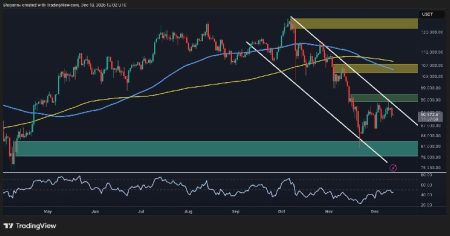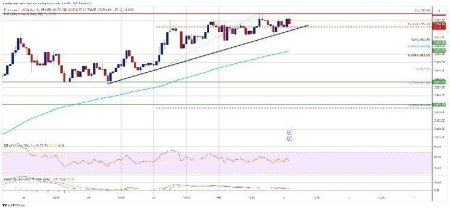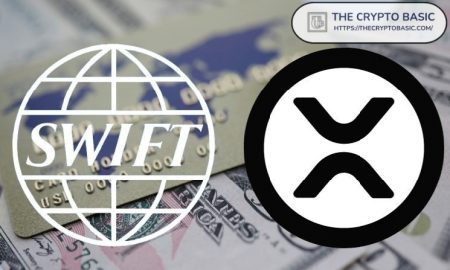East vs. West: How Asia’s Crypto Investment Strategy Diverges from Western Approaches
China Renaissance’s BNB Fund Signals Broader Shift in Asian Institutional Crypto Strategy
In a significant development that highlights the evolving landscape of cryptocurrency investments across different regions, China Renaissance has reportedly initiated plans to raise $600 million for a BNB-focused investment vehicle. This strategic move, which includes participation from Binance founder Changpeng Zhao’s YZi Labs, represents far more than a straightforward investment in Binance’s ecosystem. According to Singapore-based market maker Enflux, this development signals a fundamental divergence in how Asian institutions approach crypto investments compared to their Western counterparts.
“Regional capital allocators are seeking exposure to infrastructure tokens that drive transaction flow, not just store-of-value assets,” Enflux noted in a communication to CoinDesk, positioning the China Renaissance initiative within a broader pattern of East-West divergence in cryptocurrency investment strategies. This emerging trend reflects a sophisticated understanding of value creation in the crypto economy, where transaction infrastructure and operational networks may offer different value propositions than purely speculative or store-of-value assets.
The Utility Token Approach: BNB as a Case Study in Infrastructure Investment
BNB serves as a prime example of this strategic divergence. While Binance operates as a private company without publicly traded shares, BNB functions effectively as a proxy for stock in the exchange. Its value reflects market sentiment and confidence in Binance’s operations, making it an infrastructure token that derives value from actual business activity rather than merely scarcity or speculative interest.
This approach stands in stark contrast to Western markets, which have predominantly focused on tokenized traditional financial instruments such as Treasury bonds, investment funds, and other real-world assets. The philosophical difference appears to center on value derivation – while Western investors have sought to bring traditional finance into the blockchain world, Asian markets are building native crypto ecosystems that emphasize transaction infrastructure, exchange mechanisms, and staking platforms.
“This ties into the broader shift where Asian capital markets are building out their own layer of crypto-native liquidity networks while Western markets tokenized TradFi,” Enflux explained in their analysis, highlighting a fundamental divergence in investment philosophy. The underlying logic prioritizes activity-based value accrual over scarcity-based models, suggesting that tokens enabling and facilitating transactions may ultimately capture more sustainable value than those relying primarily on limited supply.
Beyond BNB: A Broader Pattern of Infrastructure Investment Emerges
The strategic approach exemplified by China Renaissance’s fund aligns with other developments in Asian crypto markets. For instance, Tron’s initiative to establish a publicly listed company providing investors with exposure to activity on the TRX network – which has gained significant traction for USDT transfers across Latin America – follows similar reasoning. Both cases illustrate a preference for investing in the infrastructural components that facilitate cryptocurrency transactions rather than focusing exclusively on cryptocurrencies themselves as speculative assets.
If Enflux’s analysis proves correct, the China Renaissance fund could represent a prototype for Asia’s next generation of institutional investment products: permanent capital vehicles that hold stakes in the foundational infrastructure of the crypto economy rather than just its most prominent currencies. This approach may offer more diversified exposure to the growth of cryptocurrency adoption through the platforms and protocols that enable transactions, rather than betting solely on price appreciation of specific coins.
Market Movements Reflect Diverse Investment Approaches
Current market conditions reflect the diverse approaches to cryptocurrency investment across global markets. Bitcoin continues to trade above $114,500, showing relative stability after recent volatility, while Ethereum has risen 1.5% to $4,230 amid increased network activity – despite U.S.-listed Ethereum ETFs experiencing $118 million in outflows. Meanwhile, gold has surged to a record $4,103 per ounce, gaining 2% as investors seek safe-haven assets amid renewed U.S.-China trade tensions and anticipated Federal Reserve rate cuts.
Asian markets themselves show mixed performance, with Japan’s Nikkei 225 declining 1.34% despite former President Trump’s conciliatory remarks regarding China failing to fully mitigate concerns about potential trade conflicts. These market movements suggest that while traditional safe-haven assets continue to attract investment during periods of geopolitical uncertainty, cryptocurrency markets are increasingly influenced by region-specific investment philosophies and ecosystem development rather than solely by global market sentiments.
Regulatory and Corporate Developments Shape Regional Approaches
Beyond investment strategies, regulatory and corporate developments continue to shape the cryptocurrency landscape in both East and West. In the United States, a cryptocurrency market structure bill may face delays until after the midterm elections, according to TD Cowen, potentially extending regulatory uncertainty in Western markets. Meanwhile, Tom Lee’s Bitmine has reportedly purchased over 200,000 ETH during recent market dips, adding to Ethereum’s treasury, while Ripple has announced a $200,000 bounty program for identifying vulnerabilities in the XRP Ledger Lending Protocol.
These developments highlight how different regions are approaching cryptocurrency from both investment and regulatory perspectives. While Western regulators continue to develop frameworks for cryptocurrency markets with a focus on investor protection and integration with traditional financial systems, Asian investors appear increasingly focused on building out native crypto infrastructure that may operate with greater independence from traditional financial paradigms.
As this East-West divergence in cryptocurrency investment philosophy continues to evolve, market participants worldwide will need to understand these regional approaches to effectively navigate the increasingly complex global cryptocurrency landscape. The China Renaissance fund may represent just the beginning of a more pronounced bifurcation in how different regions conceptualize and invest in blockchain technology and digital assets – with Asian markets potentially pioneering a more infrastructure-focused approach that complements the asset-focused strategies prevalent in Western markets.
The emergence of these distinct investment philosophies underscores the maturation of the cryptocurrency market as it moves beyond universal speculation toward more sophisticated, regionally tailored investment strategies that reflect different priorities and perspectives on how blockchain technology will create and capture value in the global economy.














